- Blog
- NEDC vs WLTP - Navigating Emission Standards in the EU Used Car Market
NEDC vs WLTP - Complete Guide to EU Emission Standards for Used Car Dealers
Everything used car dealers need to know about NEDC and WLTP procedures for measuring CO₂ values to verify compliance with EU emission regulations.

Das Wichtigste in Kürze
- WLTP has replaced NEDC as the standard CO₂ testing method for all vehicles registered after September 2018.
- WLTP provides more accurate emissions data by simulating real-world driving conditions.
- Using the wrong CO₂ value can lead to higher registration costs or tax issues in many EU countries.
- Several countries, like Belgium and the Netherlands, offer tools to check CO₂ values using a VIN or license plate.
- The upcoming Euro 7 standard will introduce stricter rules on emissions, including non-CO₂ pollutants and battery durability.
If you’re a used car dealer in the EU, checking the CO₂ values of your vehicles is essential. Emission regulations and tax rules vary between countries, and using the wrong value can result in unexpected registration costs.
One of the main challenges is understanding which testing method applies: the older NEDC or the current WLTP.
Both may be listed in a vehicle’s documents, but only one is typically accepted—depending on when and where the car was first registered.
This guide breaks down both testing methods and shows you how to find the correct CO₂ values, helping you avoid compliance issues and trade with confidence across EU markets.
Understanding EU emission standards
The EU has been very serious about cutting CO₂ emissions for many years to mitigate the effects of this greenhouse gas on our climate.
According to the European commission, light commercial vehicles are responsible for 14.5% of all CO₂ emissions produced in the EU.
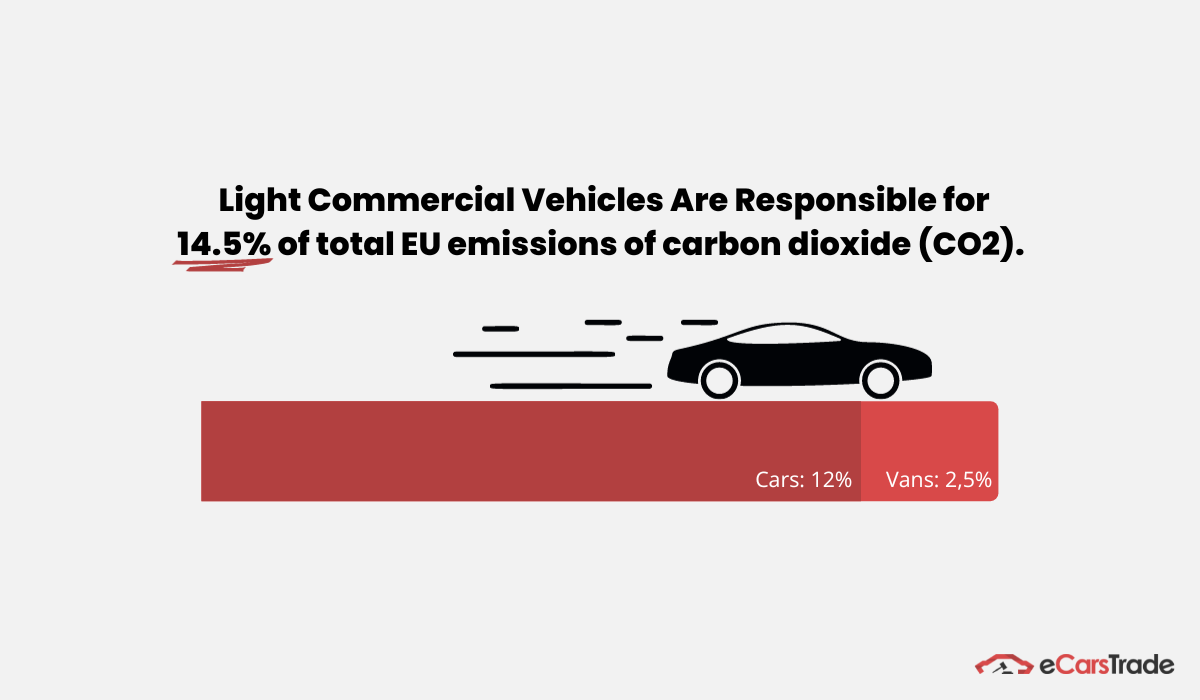
Data: European Comission
In order to limit these high figures, EU legislators set limits on how much CO₂ cars and vans can emit, expressed as grams of CO₂ per driving kilometer (g/km).
One thing that’s important to mention here is that these targets are not final. They are recalibrated every couple of years to further limit emissions, until we reach the end-goal of zero emissions.
However, this only applies to newly produced cars.
If you’re buying a used car, your vehicle would need to be compliant with the emissions target of its model year.
There are two distinct testing procedures that calculate the exact quantity of emissions (grams of CO₂ per kilometer) - one older and one newer.
Sometimes, both can appear among your purchased car’s documentation, but only one may be taken into consideration during registration and taxation procedures.
NEDC vs WLTP: Comparison
When assessing CO₂ emissions (along with fuel consumption and pollutant emissions), car manufacturers have relied on two testing procedures: NEDC (New European Driving Cycle) and WLTP (Worldwide Harmonized Light Vehicles Test Procedure).
What is NEDC? (Legacy testing method)
The NEDC is the older of the two. It was devised in the 1980’s and relied on theoretical or lab-setting driving conditions.
Because of this testing environment, the NEDC didn’t reflect the CO₂ figures emitted during real-life driving conditions.
As the EU was becoming more strict about cutting pollution created in transportation, there was a need to replace this outdated system with a new testing procedure.
What is WLTP? (Current testing standard)
The EU adopted the WLTP (Worldwide Harmonized Light Vehicles Test Procedure) starting in 2017.
It became mandatory for all new car registrations from September 2018. WLTP is more dynamic and closely replicates real driving behavior, including varying speeds, temperatures, and equipment configurations.
Key differences between NEDC and WLTP
The WLTP procedure tests cars in an environment that more closely resembles real driving conditions. Here is a comparison for better understanding.
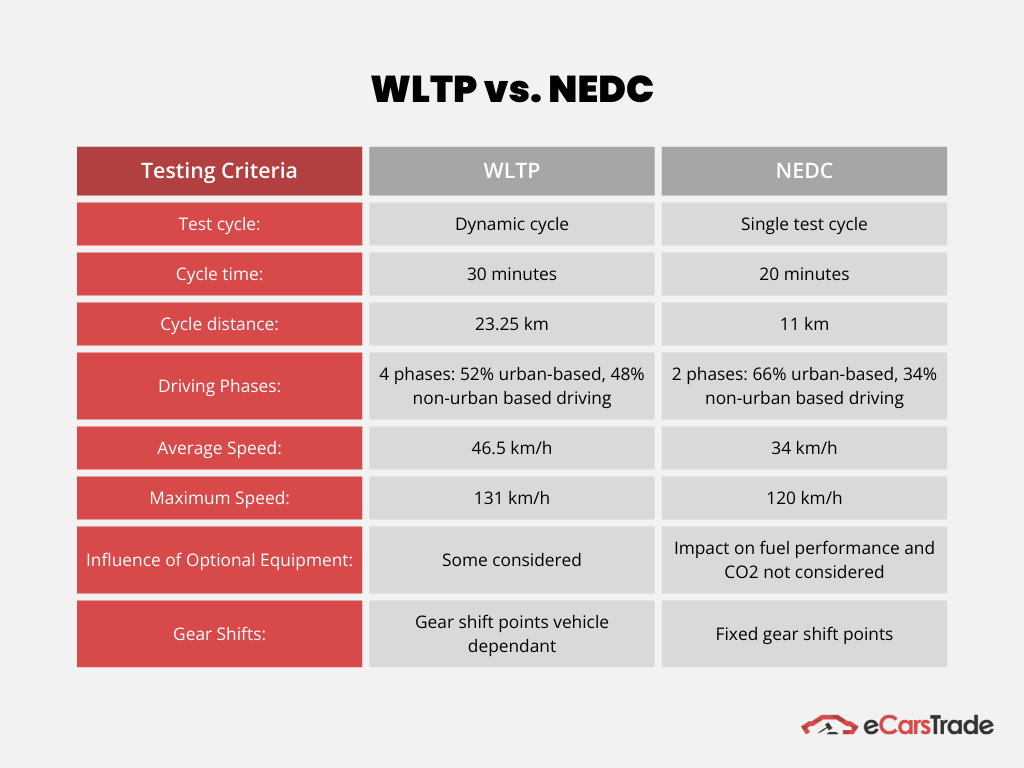
Data: Riverale
Under NEDC, emission standards were general. In other words, there was one standard for cars and one standard for vans in each period.
With WLTP every new car make and model is given a specific CO₂ emissions standard to adhere to. These standards are outlined in a special document issued by the European Commission.
As you’re probably already guessing, these two tests, being so different, produce different numbers.
The WLTP records significantly higher CO₂ readings compared to NEDC. According to studies, that discrepancy is as high as 9.6g of CO₂/km.
Which values apply to your vehicle?
What does that mean in practical terms? It means that vehicles that were compliant with CO₂ emission standards under NEDC cannot be compliant anymore when tested under WLTP conditions.
► Registration date guidelines
Since the change from NEDC to WLTP was implemented in September 2017, it’s only all new cars from that point onward that need to be compliant with this new standard on the side of car manufacturers.
And since the change was introduced gradually, WLTP mostly applies for new cars registrations from September 2018.
In other words, if the car you’re buying was first registered in September 2018 or later, it must be CO₂ compliant under the WLTP testing procedure.
On the other hand, if the car was registered before this date, your Certificate of Conformity with NEDC CO₂ values will apply and you don’t have to do anything to get the car re-certified.
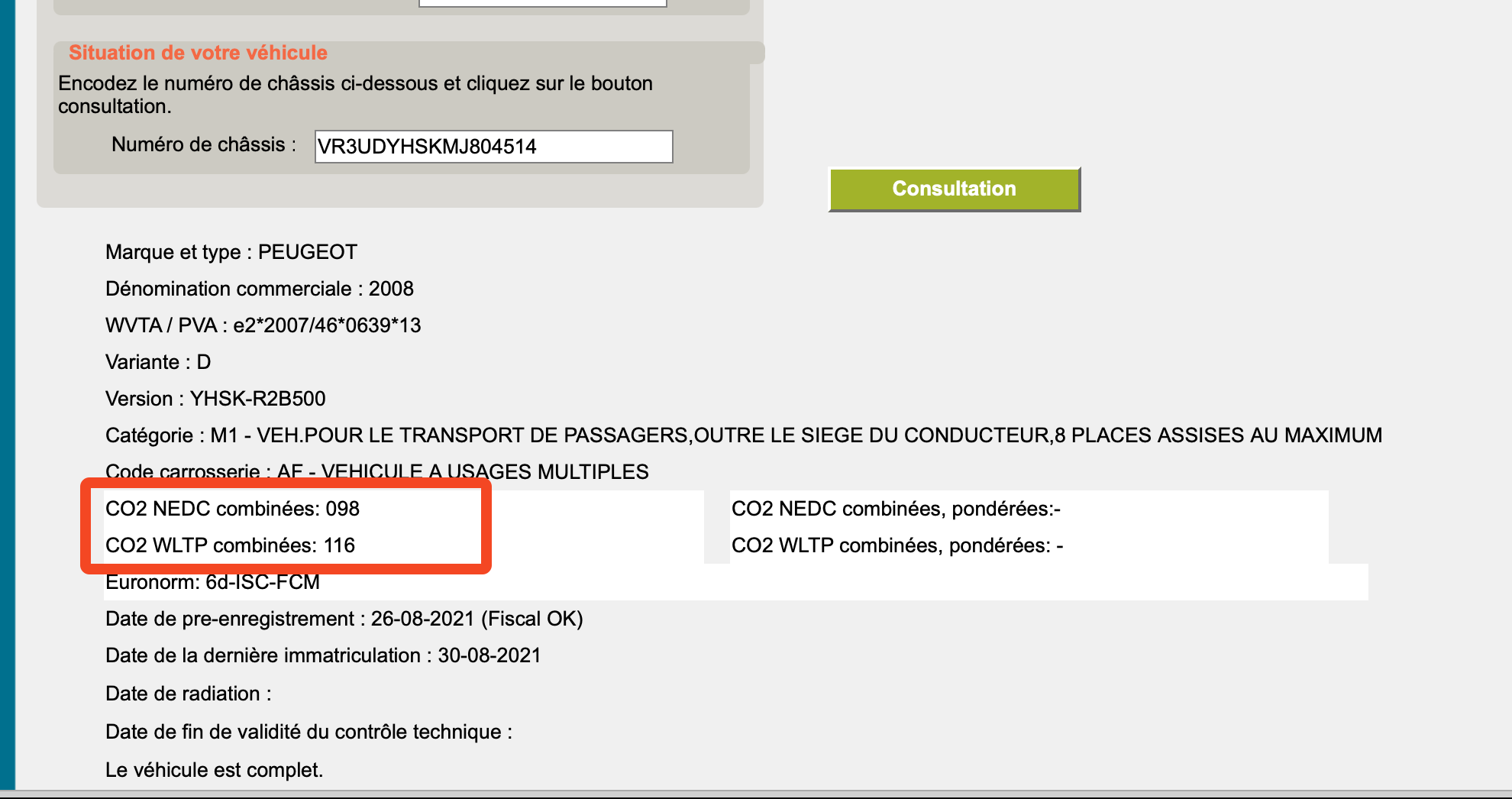
► Transition period exceptions
There’s exceptions, though.
Cars registered in the period in-between came with both NEDC and WLTP values in some countries and both were acceptable.
In fact, cars registered after that date can also come with both values expressed, but in most of those cases only the WLTP value is considered.
If the car is only NEDC compliant, higher taxes and driving limitations may be imposed.
However, some countries continued to accept NEDC values even after this transition period expired and until as recently as 2021.
That’s why it’s crucial to ensure the cars you’re buying are compliant in the country of resale as they are in their country of origin.
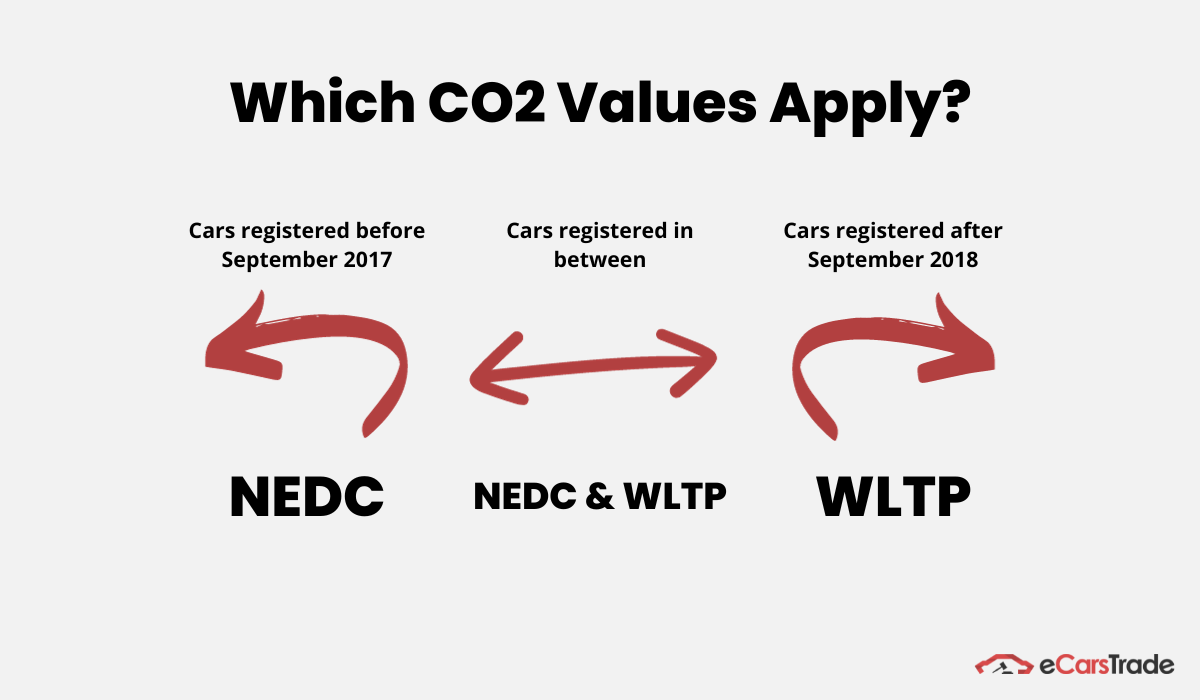
All of this can seem a bit confusing, but the point is actually simple.
If you need to check whether the car you’re buying is CO₂ compliant, you need to know which year it was registered in and what its CO₂ values are.
In short:
- Cars registered before September 2017: NEDC values apply.
- Cars registered from September 2017 to September 2018: May include both NEDC and WLTP values. Either may apply depending on the country.
- Cars registered after September 2018: WLTP values are mandatory in most countries.
Country-specific implementation and regulations
The shift from NEDC to WLTP was by no means easy to implement across the European Union.
As a result, some implementation differences emerged that made NEDC inadmissible earlier or prolonged the period in which both NEDC and WLTP CO₂ values were accepted.
Here’s a brief overview of some of these situations.
Transitional periods
As we already mentioned, some countries have had transitional periods during which a mix of NEDC and WLTP values were accepted.
This transition period allowed for a smoother shift from the old testing procedure to the new one. This is a common scenario in used car sales where a car was compliant under NEDC but non-compliant under WLTP when it was exported into a new country.
Implementation dates
The precise dates for the mandatory use of WLTP has varied among EU member states.
Some countries might have had a gradual approach to the implementation of WLTP for new registrations. For example, in Belgium, NEDC values were accepted until January 2021.
In the Netherlands, this date was 1 July 2020.
If you’re a used car dealer operating across the EU, these exemptions and specific cases are important to take note of.
Otherwise, you might be selling cars that were compliant in one country and none compliant when they crossed the border to a country with different regulations.
Practical guide: Checking CO₂ values and compliance
With the help of all this information, you are now perfectly set to ensure the cars you’re selling are CO₂ compliant, wherever you’re operating from..
Where to find CO₂ values
Cars that were compliant at the time of production will come with a Certificate of Conformity (COC) where this is mentioned. This information may also be available in the owner’s manual of the car.
Some online databases will also have CO₂ values and emission compliance information readily available. There are two kinds of these databases.
The first ones can be accessed through the car manufacturers’s website. In most cases, you can just look up the car’s specifications and read the CO₂ values. Here’s Volvo’s specs for the XC60, for example:
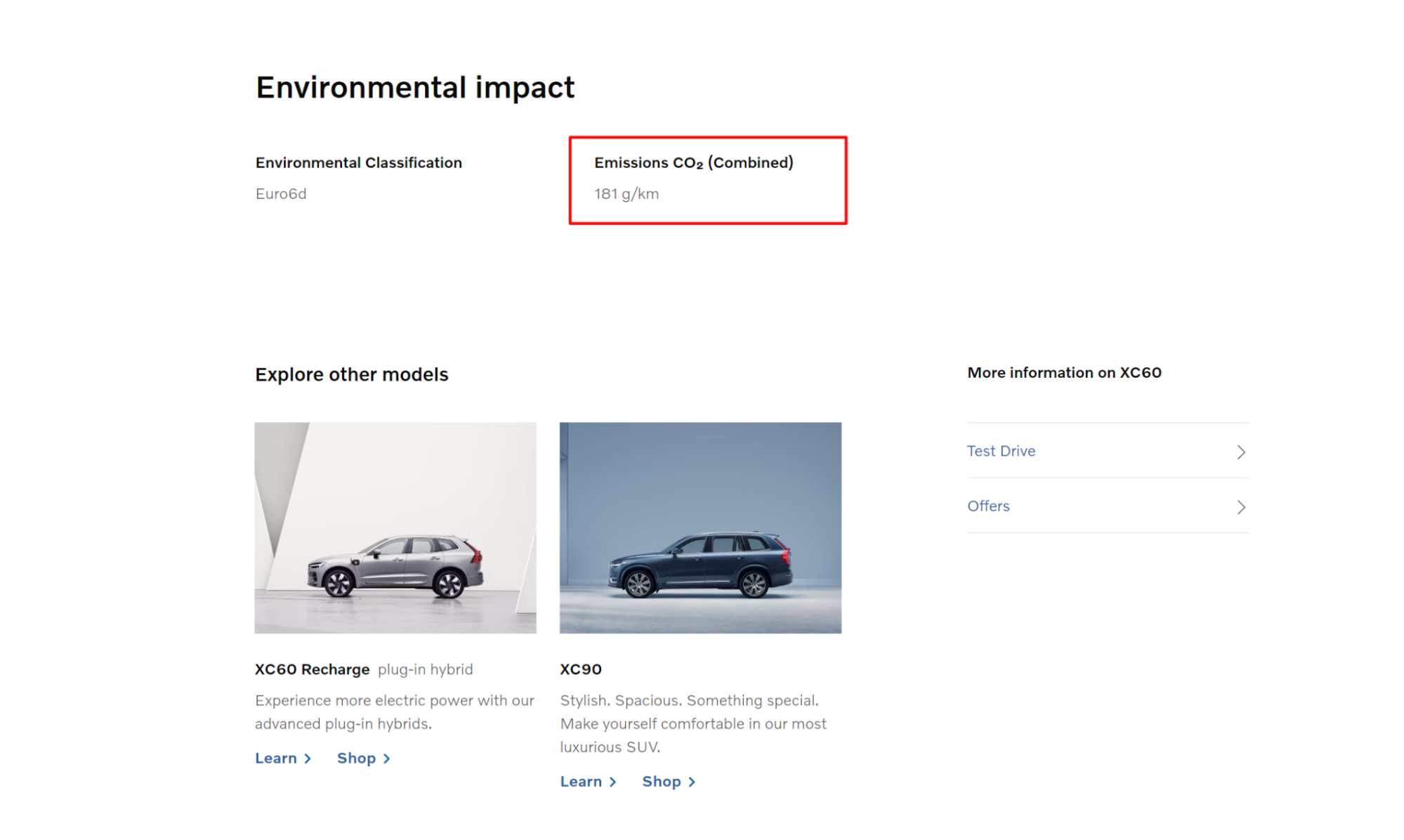
Fortunately, for some countries, there are national resources that will let you check the car’s CO₂ values according to its chassis number and/or current license plate.
► Belgium
For Belgian cars, use the resource on the Belgian mobility website. Once you land on the page, simply type in the VIN number in the field below and click the green button:
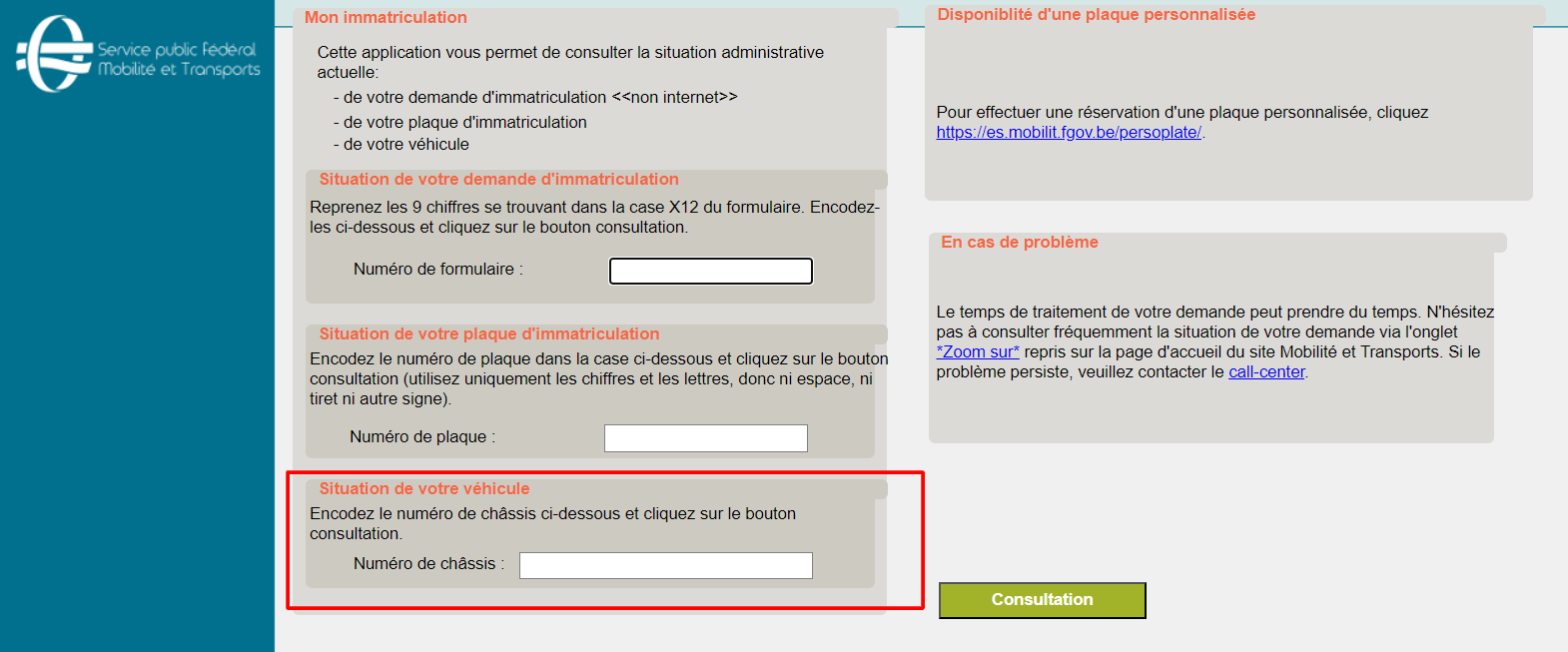
The results you get will provide various details about the vehicle, and among them the CO₂ values. In our example below, we looked up a car registered in 2018 and got CO₂ values for both NEDC and WLTP.
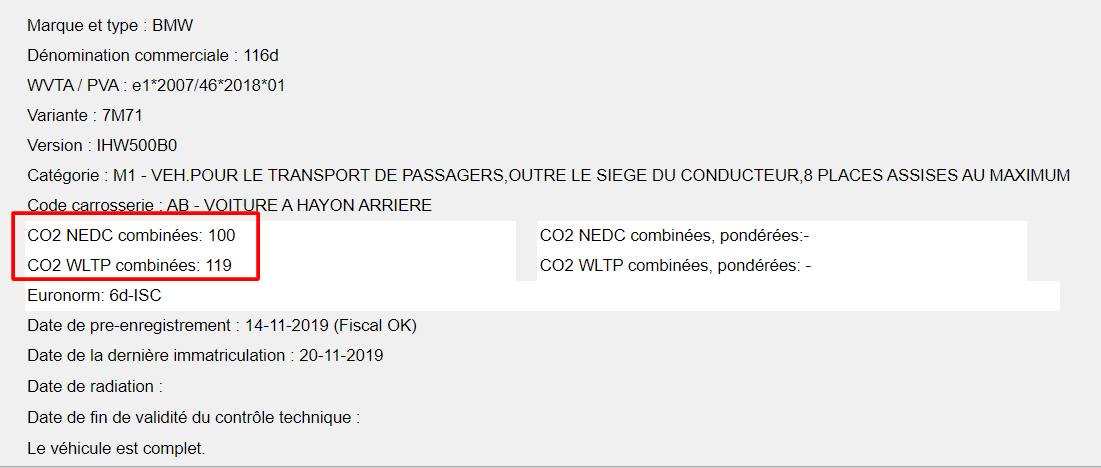
► The Netherlands
To check the correct CO₂ value for Dutch cars, you can check the RDW website. In this case, you will be entering the plate number into the search bar.

The Dutch database will give you an even richer source of information about the vehicle and you’ll have to navigate to the section dedicated to the environmental impact of your vehicle. There, you’ll find CO₂ values for the testing procedures that was used.
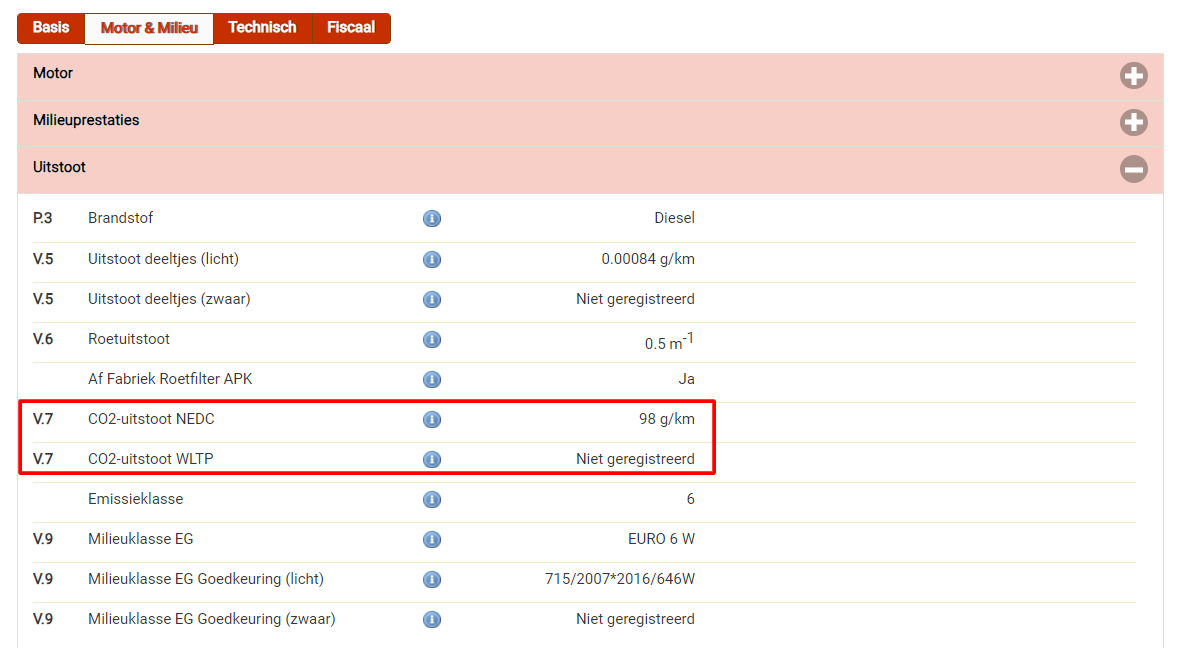
► Other EU countries
As for German and Luxembourg cars, the CO₂ values should be mentioned on the COC or the registration documents.
French cars do not come with a COC, so if you’re buying a French car from 2018, contact us and we’ll do our best to figure out the CO₂ values together.
If the car has already arrived at our parking in Belgium, we can check the registration documents for you in order to figure out the CO₂ value for certain.
You can always contact your account manager for help and clearing out any doubts.
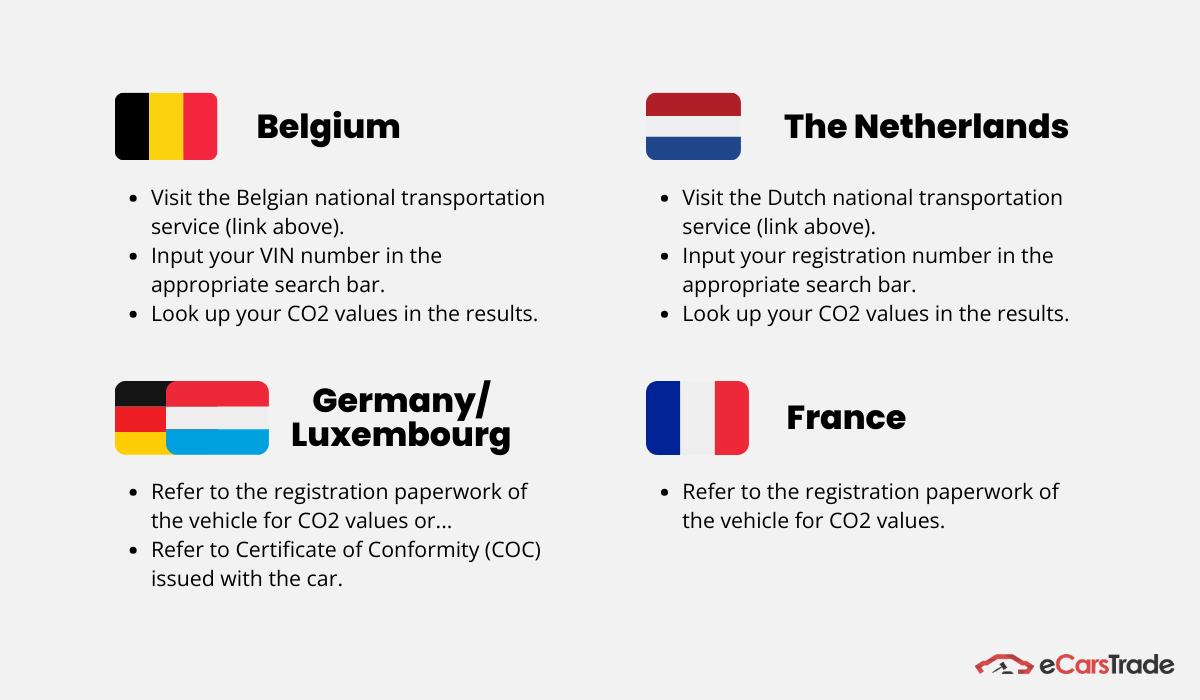
Special considerations for electric and hybrid vehicles
How WLTP applies to EVs
Electric vehicles (EVs) are tested under WLTP to measure both their energy use and driving range.
The test uses more realistic driving conditions, like higher speeds and quicker acceleration, so the range shown is usually lower than under NEDC, but more accurate.
This gives buyers a better idea of how far the car can go on a full charge.
WLTP also takes into account the weight of extra equipment and different temperatures, both of which can affect EV performance.
For dealers, showing the WLTP range helps set clear expectations, especially when selling to customers in other countries.
Hybrid vehicle testing
Hybrid vehicles, including plug-in hybrids (PHEVs), are tested in both electric and fuel-powered modes.
This gives CO₂ values based on mixed driving. However, the actual emissions depend a lot on how the car is used.
If it’s charged often and driven in electric mode, emissions stay low. But if it’s mostly driven with the engine, the real emissions can be much higher than the WLTP figure.
Cross-border trading and import/export considerations
EU import/export compliance
Cars exported to another EU country must meet the emission standards applicable in that destination. This means the CO₂ value used for registration and taxation must match that country’s accepted standard (NEDC or WLTP).
Additionally, different countries may interpret WLTP transition rules differently.
A vehicle with a compliant WLTP value in Belgium, for example, might still trigger additional checks or documentation when registered in France or Germany, especially if it was manufactured during the transitional period.
Used car dealers should also be aware of how WLTP values affect import duties or environmental taxes in specific countries. In some cases, even a few grams of CO₂ difference can lead to a noticeable change in total import cost.
Avoiding compliance issues
To avoid costly surprises or registration delays:
- Carefully check the vehicle’s registration date.
- Confirm whether it carries NEDC or WLTP values, or both.
- Use national databases or contact local authorities to understand specific requirements.
- Be cautious with vehicles produced around 2017-2018, as these are most likely to be affected by testing method discrepancies.
When in doubt, consult with your account manager at eCarsTrade or a local vehicle compliance expert.
Der Import von Fahrzeugen aus Europa kann kompliziert sein, aber eCarsTrade macht es Ihnen einfacher. Hier erfahren Sie, wie es geht:
Future of emission testing standards
WLTP updates and revisions
The WLTP testing system continues to change as cars become more advanced and environmental rules get stricter. From time to time, updates are made to keep the tests closer to real-life driving.
These updates may include:
- New driving scenarios or weather conditions
- Better testing for hybrids or new fuel types
- Clearer rules for measuring battery performance in EVs
- More accurate ways to include optional equipment
For dealers, it’s important to know that CO₂ values from older WLTP versions might not match the latest ones, especially for electric and plug-in hybrid vehicles.
What’s next after WLTP?
The EU is preparing a new standard called Euro 7, which will start in 2026. This will go beyond CO₂ and fuel emissions. It will also include:
- Brake and tyre particle emissions
- Battery life for electric vehicles
- The car’s full environmental impact from production to disposa
Dealers should follow these updates closely to avoid problems when trading across borders and to keep their stock ready for future regulations.
_01JE9WH8CRTMG3B3WDH56WNJHD.png)

